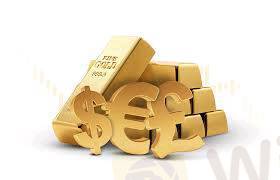
2025-02-05 06:54
業內Post-COVID Economic Environment:
#firstdealofthenewyearFateema
Post-COVID Economic Environment: Assessing the Impact on Inflation
The COVID-19 pandemic has significantly disrupted the global economy, leading to a sharp contraction in economic activity and a surge in government spending to provide relief. As economies gradually recover from the pandemic's initial shock, concerns have arisen regarding the potential inflationary implications of a post-COVID economy. Several factors could influence inflation in the aftermath of the pandemic:
Unprecedented Fiscal and Monetary Stimulus: Governments worldwide have implemented massive fiscal stimulus packages to support households and businesses during the pandemic. Additionally, central banks have adopted accommodative monetary policies, including ultra-low interest rates and quantitative easing. These measures could lead to increased money supply and inflationary pressures in the long term.
Supply Chain Disruptions and Bottlenecks: The pandemic has caused widespread disruptions to global supply chains, leading to shortages and higher production costs in various industries. These supply-side factors could contribute to cost-push inflation as businesses pass on increased costs to consumers.
Pent-up Demand and Consumer Spending: As economies reopen and consumers unleash their pent-up demand, increased spending could fuel inflation.
This phenomenon, known as "revenge spending," could be particularly pronounced in sectors that were severely impacted by the pandemic, such as tourism and hospitality.
Labor Market Dynamics: Labor shortages and wage pressures could also contribute to inflationary pressures in a post-COVID economy. Factors such as changing demographics, skill mismatches, and reduced labor force participation may exert upward pressure on wages, leading to higher production costs and consumer prices.
While these factors could lead to inflationary pressures in a post-COVID economy, it is essential to note that other forces, such as technological advancements and global competition, may counterbalance these effects. Investors should carefully monitor economic indicators and policy developments to gauge the inflation outlook and adapt their portfolio strategies accordingly, including reassessing the role of gold as an inflation hedge.
贊 0
FX2369241724
거래자
熱門討論
業內
哎,现在明白不赌就是赢啊
行情分析
美元/加元技术面
技術指標
外汇技术分析之波浪理论
業內
[活動]論交易,贏取200元話費補貼
技術指標
EZ.Fury Kite是基于趋势指标MA进行判断
技術指標
指标派是什么?
市集分類

平臺

展會

代理商

招聘

EA

業內

行情

指標
Post-COVID Economic Environment:
 巴基斯坦 | 2025-02-05 06:54
巴基斯坦 | 2025-02-05 06:54#firstdealofthenewyearFateema
Post-COVID Economic Environment: Assessing the Impact on Inflation
The COVID-19 pandemic has significantly disrupted the global economy, leading to a sharp contraction in economic activity and a surge in government spending to provide relief. As economies gradually recover from the pandemic's initial shock, concerns have arisen regarding the potential inflationary implications of a post-COVID economy. Several factors could influence inflation in the aftermath of the pandemic:
Unprecedented Fiscal and Monetary Stimulus: Governments worldwide have implemented massive fiscal stimulus packages to support households and businesses during the pandemic. Additionally, central banks have adopted accommodative monetary policies, including ultra-low interest rates and quantitative easing. These measures could lead to increased money supply and inflationary pressures in the long term.
Supply Chain Disruptions and Bottlenecks: The pandemic has caused widespread disruptions to global supply chains, leading to shortages and higher production costs in various industries. These supply-side factors could contribute to cost-push inflation as businesses pass on increased costs to consumers.
Pent-up Demand and Consumer Spending: As economies reopen and consumers unleash their pent-up demand, increased spending could fuel inflation.
This phenomenon, known as "revenge spending," could be particularly pronounced in sectors that were severely impacted by the pandemic, such as tourism and hospitality.
Labor Market Dynamics: Labor shortages and wage pressures could also contribute to inflationary pressures in a post-COVID economy. Factors such as changing demographics, skill mismatches, and reduced labor force participation may exert upward pressure on wages, leading to higher production costs and consumer prices.
While these factors could lead to inflationary pressures in a post-COVID economy, it is essential to note that other forces, such as technological advancements and global competition, may counterbalance these effects. Investors should carefully monitor economic indicators and policy developments to gauge the inflation outlook and adapt their portfolio strategies accordingly, including reassessing the role of gold as an inflation hedge.
贊 0
我也要評論
提問
0條評論

還沒人評論,趕緊搶佔沙發

提問
還沒人評論,趕緊搶佔沙發